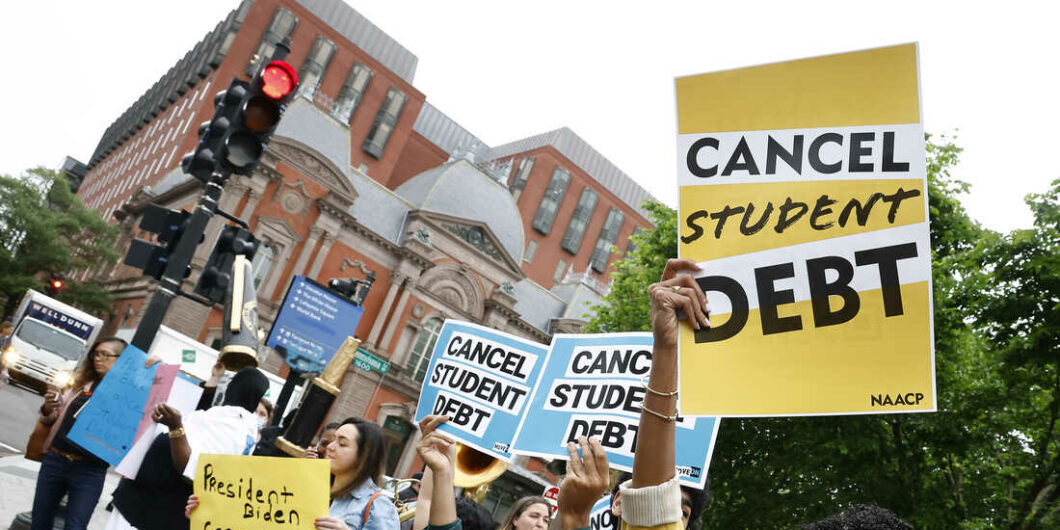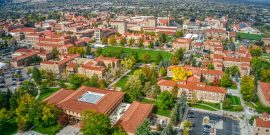Should conservatives recapture American higher education or start anew?
The Black Hole of Student Loans
What is the value of debt forgiveness? One answer might be electoral: The higher education debt relief struck down by the Supreme Court in June was to be beneficial to about 40 million people, with about half of those having all their debt wiped out. There are about 170 million registered voters, who might, for present purposes, assume to be taxpayers. The CBO estimated that the cost of canceling up to $10,000 of debt over 30 years issued to defined classes of borrowers would be $400 billion. Divided by the remaining 130 million voters, this amounts to $2,350 in increased tax per voter, or roughly $100 per year at a 5 percent discount rate. Perhaps the administration did not expect this amount to raise much opposition.
But let us put aside this cynical take on the proposed policy. If the disguised rationale was not increasing the chances of electoral success, could there be good policy arguments in favor of generalized debt relief? Well—no. The present gargantuan structure and size of the education sector has been justified by a desire to create “human capital,” diminish inequality, encourage mobility and enhance civic virtues. But it does none of those things—and policies that implicitly or explicitly subsidize this monstrosity only make matters far worse.
There is no doubt that many Americans find themselves at times heavily burdened by debt—be it for mortgages, medical expenses, or education. Aside from crisis situations, such as natural disasters or pandemics, there have never been serious discussions about general debt relief for people having taken out too large mortgages or not having taken out medical insurance. Few would argue that such policies would be beneficial for society. On the contrary, most would recognize that generalized debt relief in these areas would increase recklessness. Is there any reason to believe debts incurred for higher education are any different?
In theory, perhaps. In practice, drawing on evidence—no.
Defenders of subsidized loans, and the forgiveness of educational debt that they generate, generally argue that these subsidies allow more and more people to attend college, which leads to a more productive, more educated, more equal, and more civil population. Unfortunately, they fail to accomplish any of these goals.
The drastic expansion of education happened because the United States wanted to catch up in military preparedness in response to the Soviet Union’s launch of Sputnik. It started with the 1957 National Defense Education Act, later expanded by Lyndon Johnson’s 1965 Higher Education Act, which created the system of federal student loans. It turns out, these were hysterical, badly executed reactions that sowed the seeds of the gradual decline both of higher education and civil discourse.
As a consequence of these Acts, the student population quickly exploded from three to nine million. Yet the addition was not in STEM, but in the humanities and so-called “social sciences.” Subsidies did not create massive numbers of kids possessing mathematical and scientific aptitudes, but resulted in the widespread creation of obscure jargon, a compounding mismatched job market, and frustrated generations of degree holders. The incomes associated with non-STEM degrees were lower than expected, not enough to repay the student loans and fulfill expectations of social mobility.
Statistics reflect this observation: By the age of thirty-three in 2016, 26 percent of Arts and Humanities majors who attended non-selective schools defaulted on their student loans, whereas in STEM, only 16 percent did. That year, 43 percent of the roughly 22 million Americans with federal student loans were not making payments, and one in six borrowers (3.6 million) were in default on $56 billion of student debt. Also, a 2016 report from Pew Research Center showed that 26 percent of millennials (defined as those born in 1981 or later) lived with their parents, up from 22 percent in 2007, percentages that translate to 16.3 million young adults living with their parents, compared to 13.4 million in 2007. These data combined suggest compounding mismatches between what students study and job opportunities and incomes, as well as the impact of the debt millennials took upon themselves.
A 2021 Wall Street Journal article summarizes detailed statistical evidence that demonstrates not only that access to college did not close the wealth gap for African Americans, but that “the median net worth for Black households with college graduates in their 30s has fallen to $8,200 from about $50,400 three decades ago.”
A personal history in the article illustrates well what is behind the aggregate numbers. Ristina Gooden earned an undergraduate hospitality degree with $18,500 in student debt. She subsequently made about $50,000 a year until deciding to return to school at age 31, expecting to graduate with $100,000 in student loans that she would then carry for the rest of her life—diminishing her net worth. She admits doing this in part out of a “deep need to be recognized as an intellectual” and desire for others “to see me as the smartest person in the room.”
There’s nothing wrong with pursuing such vague social ambitions for the respect associated with certification, even lacking expectations of monetary returns—but only if you pay for it. The question is why taxpayers should subsidize personal goals by wiping out education debts, and why we have an educational system that continues to promote the view that a degree necessarily reflects increased brainpower and wisdom to start with. It is by now too well documented that at all levels of education, higher-ed in particular, the standards of knowledge required to obtain a degree have been drastically lowered.
We ought to encourage the acceleration of education, rather than subsidizing longer and longer stays on campuses that have become real estate institutions printing increasingly meaningless certificates.
The subsidies and debt relief increase inequality—and not only among students. A smart 18-year-old headed to college gets hundreds of thousands of dollars of subsidies through federal student loans. A youth of the same age who becomes an electrician, plumber, or shop owner has no access to subsidies. If he gets a loan, there is no debt relief in sight. The result is increased inequality. A bipartisan legislation introduced this year would create a pilot program allowing 250 GI Bill-eligible veterans to receive a grant to open their own business or purchase a franchise—instead of being constrained to go to university. The grant would be equivalent to the maximum amount under the GI Bill. It would be a step in the right direction.
If the heavily subsidized granting of degrees neither bestows better job prospects for many, mitigates inequality, nor enhances social mobility, why single out this sector for such a wide range of massive implicit and explicit subsidies? A possible answer may be that, even if they did not create monetary rewards, the sector was nevertheless creating valuable intangibles such as heightened civic virtues. But the evidence refutes this view too. The contrary is quite evident, reflected in the declining level of discourse on campuses and in the media, which has been among the inadvertent impacts of the 1958 and 1965 Acts too.
The massive hiring of faculty following the 1958 and 1965 Acts, who were not scientifically inclined but transitioned to universities for the higher pay that the private sector was paying then, had to conform nevertheless to academic standards of “publish and perish.” With the then-few academic journals, they could not produce research to fit these journals’ standards. Subsidies then created hundreds of journals, conference volumes, and university presses with dubious (if any) standards or peer reviews and were rarely if ever cited. Faculties used the publications for promotions toward tenured jobs. Over decades, this resulted in complacent, mediocre, venally petty echo chamber faculties that specialized in jargon—a phenomenon that some predicted would happen back in the 1960s. This was the training ground for the next generation of students, teachers, and journalists. It led to the lethal combination between mediocre faculty and mediocre students resulting in lowering of standards, engaging in civil, informed debates in particular.
There was less danger of this happening in STEM. The vast majority of students did not apply to these fields, and if some unqualified ones did, they dropped out quickly. STEM faculties knew that lowering their standards and certifying a-numerical and illiterate youth as engineers would have resulted in immediately observable consequences: collapsed bridges, planes falling from the sky, or surgeries going awry. In contrast, other faculties merely produced words. Although words can have disastrous impacts shaping thoughts too, it took a few decades for them to have the devastating impact that is so visible now.
Meanwhile, the vast non-STEM expansion of faculties and students also reshaped higher education, contributing to increased administration to deal with mediocre and undisciplined students. The administrative expansion made matters worse: Instead of solving the problem, it accommodated it. The consequences confirmed the 1976 “law” bearing Dr. Gammon’s name. Max Gammon was a British physician who published that year an in-depth comparison of input and output in the increasingly nationalized hospital system in the UK. He concluded that the new bureaucratic system acted “like a “black hole,” simultaneously sucking in resources, but shrinking in terms of “emitted” production.” History rhymes in American education.
The massively subsidized and expanded education sector (student loans alone stand now at $1.75 trillion) did not solve most of the problems expected from its buildup. Instead of digging ourselves deeper into financial holes and creating more frustrated generations, it is time to consider drastically contracting it. Experience and discipline, rather than certification, are more reliable tickets out of poverty. We ought to encourage the acceleration of education, rather than subsidizing longer and longer stays on campuses that have become real estate institutions printing increasingly meaningless certificates having nothing to do with true education.



